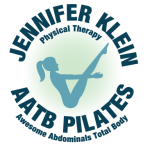Women who experience sacroiliac joint dysfunction during pregnancy suffer from pain and discomfort that may prevent them from being physically active. With a focus on improving pelvic alignment and mechanics at the sacroiliac (SI) joint, located in the pelvis between the sacrum and the ileum, this condition is highly treatable. If the condition is misdiagnosed or goes untreated, an individual can experience chronic low back pain that interferes with activities such as bending, lifting and transitioning from different positions. Continuing functional complaints of SI pain include difficulty standing, cycling, walking, sitting, sleeping and lying. A staggering number of women have musculoskeletal complications during pregnancy.
What is Sacroiliac Joint Dysfunction?
Sacroiliac joint dysfunction is caused by motion or changes in the normal positioning of the joint. Poor SI joint mechanics can strain the surrounding tissues, ligaments and muscles, and cause inflammation within joints. SI dysfunction causes pain in the patient’s posterior pelvis, and is often described as deep stabbing pain in the L5/ S1 region. The patient’s symptoms will increase with prolonged sitting, standing, walking, stair climbing, unilateral standing, or torsion activities.
Physical Signs
During pregnancy, fluctuating hormones and increased weight can cause biomechanical stresses including pelvic and spinal alignment changes and joint laxity. Pregnant women at risk may have experienced prior lumbar pain, back or sacroiliac joint pain, incurred trauma to the pelvis, or had pain in a previous pregnancy. Patients typically report pain occurring with transitional movements such as performing sit-to-stand, rolling in bed, or walking up an incline or stairs. The pain that accompanies transitional movements is usually a sharp pain at the SI joint involved. Sometimes patients mention the sense of instability, grinding or clicking with movement.
Treatment
The treatment plan focuses on modifying the positions of treatment, such as supine, side-lying, and/ or quadruped, or elimination of certain activities. It may be beneficial to use external stabilizers such as belts or corsets specifically designed for use during pregnancy. Women should be conscious of their positioning and take precautions such as navigating stairs sideways with a railing and avoiding asymmetrical positions of the hips such as crossing legs, lunges, bicycles or the figure-four position during sleep. Patients need to learn proper body mechanics while bending and lifting, and maintain a neutral spine throughout daily activity. These approaches assist in reducing tension placed on the SI joint through extremes of motion. Sleeping postures such as sleeping face up with a pillow under the knees can decrease tension placed at the SI joint. Postural re-education, sleep positioning and strengthening postural stabilizers are key components in the treatment of this patient population.
Getting the Right Care
SI joint dysfunction is difficult to treat due to pain and functional mobility limitations. To decrease pain, patients benefit from constant mind-body awareness for preventive measures and a PT-driven strength and flexibility program. Women need to be aware of how pregnancy-related changes can cause strain throughout their body. We can successfully help our body to compensate for these changes by improving posture, body mechanics and modifying how the patient moves. The changes, like altered posture and increased laxity at the joints, are normal changes that happen with pregnancy, but pain is not normal.


Recent Comments